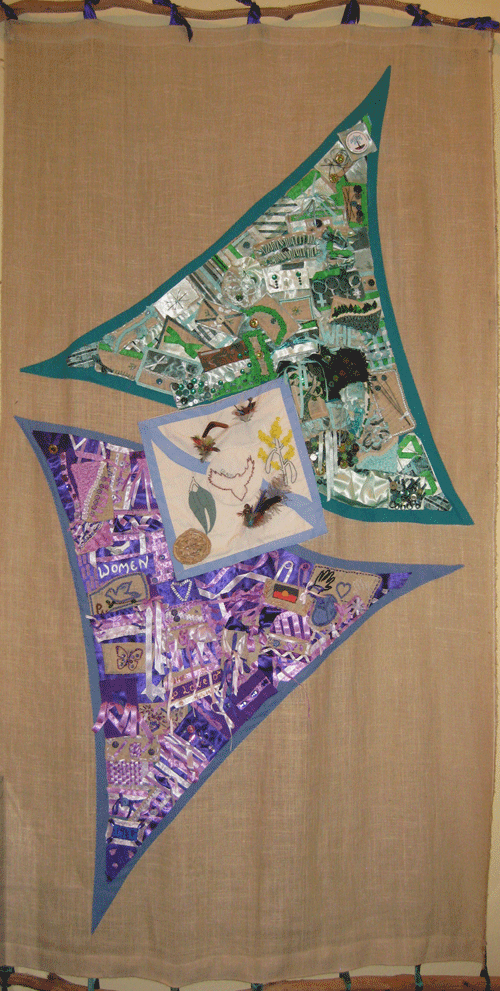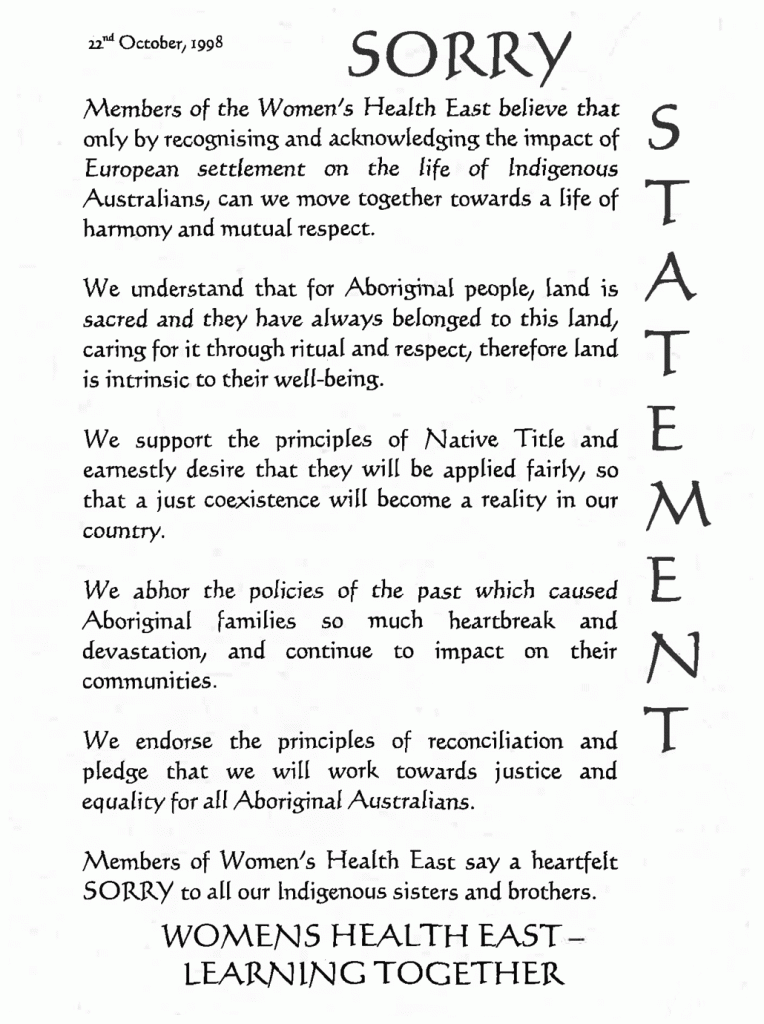Our History
Women’s health services began to be established in Victoria in the late 1980s in response to local women’s networks and health-related activities. Women’s Health East, originally called the Outer Eastern Women’s Health Service (OEWHS), was established in 1989.
Today, Victoria has a series of metropolitan and rural women’s health services, operating autonomously but within a common framework and supported by operational funding through the Victorian Government’s Community and Women’s Health Program.
The Story
The origins of Women’s Health East date back to a meeting held by a number of female teachers in the outer east to share their concerns regarding unsatisfactory experiences with the health industry. Out of this, a Women’s Health Day was held at Ferntree Gully Library to highlight the needs and issues in women’s health across the East.
Over one hundred women attended this function, leading to the formation of the Outer Eastern Women’s Health Network. This network, and the Women’s Advisory Committee for Maroondah Hospital, was subsequently approached by Kay Setches MP, the local member for Ringwood, with the proposal that they join forces to apply for funding to establish a women’s health service in the area. A steering committee was established and prepared a successful submission to the Victorian Department of Health, which granted funding for three years. For several years, the OEWHS was located on Maroondah Highway, and has since been housed at both Warrandyte Road and Heatherdale Road in Ringwood and now at its present location at 1/125 George Street Doncaster East. The service officially changed its name to Women’s Health East in 1997.
Women’s Health East has seen much growth and has developed in exciting directions since it was established in 1989. It has moved through various stages of being, from providing direct health services through a women’s health clinic and health information line, to a focus on health development and strategic partnerships, to its current work as a health promotion organisation addressing the social determinants of health that impact on women across the East.
From its inception, Women’s Health East has worked continually to assess the health needs of women in the region, analyse existing services and how women respond to them, identify gaps, and trial new approaches. Women’s Health East covers a wide catchment area with a diversity of residents of different ages, ethnicities and lifestyles. Our membership attracts women representing a broad demographic who live, work or study across the East, as well as a range of health and community organisations working with women in the region.
Working in partnership with other organisations, devising innovative initiatives and advocating for women’s health and wellbeing have made Women’s Health East a leader in the sphere of women’s health in the region.
About Our Logo
Women’s Health East is proud of our logo which was originally developed in partnership with our local community, through an arts project which resulted in the creation of a beautiful and meaningful banner on which the logo is based.

HANDCRAFTED BANNER
The handcrafted banner that is displayed in the reception area of Women’s Health East is a beautiful reminder and celebration of women, their lives and their health. Its two sails spotlight the colours of purple and green, which symbolise dignity, self-reverence, self-respect, and hope and new life respectively. The banner is a remarkable achievement of working together, learning, imagination and creativity. It was created by dozens of women from the region who embellished the tall banner with ribbons, buttons, sequins and embroidery. A richly symbolic contribution came from Wurrundjeri Elder Joy Murphy-Wandin and some of her female family members. Their contribution reflects their personal situation and a contribution on behalf of the Indigenous women who are the traditional custodians of the land.
A large piece of cloth unites all the detailed work by local women, Joy and her family. The cloth links the two sails with strips of blue that represent the Yarra River, which runs through much of the Eastern Region. A bird’s outline depicts the spirit totem, the eagle Bunjil. Joy’s mother contributed coils of grass river seeds which signify the return of the stolen children, of whom she was one. The wattle and gum embroideries, the latter an Aboriginal symbol of welcome, have come from Joy’s nieces, as have the multi-coloured bunches of small feathers from native birds.
Joy’s personal contribution is a boomerang brooch, not the hunting boomerang with which European Australians are familiar but a musical boomerang, which has a somewhat different shape and is a traditional instrument of music in south-eastern Victoria. It is, says Joy, another symbol of returning home, of a cycle completed.
Women’s Health East is proud of the local participation that went into the creation of the banner. Local women’s hands and hearts created a beautiful piece of art and symbolism.
The banner was unveiled at the 1998 Women’s Health East Annual General Meeting in a moving ceremony that acknowledged and recognised the impact of European settlement on Iand belonging to Indigenous Australians, and the impact of official policies that saw Aboriginal families torn apart. A ‘Sorry Statement’ prepared by Women’s Health East and the Learning Together Aboriginal Awareness Group, was read out at the 1998 AGM and is now framed and on display in the Women’s Health East office.
Women’s Health East’s logo was updated in 2013. This was done with strong regard to the earlier version in order to be true to its concepts, symbols, meaning and history.

SORRY STATEMENT



